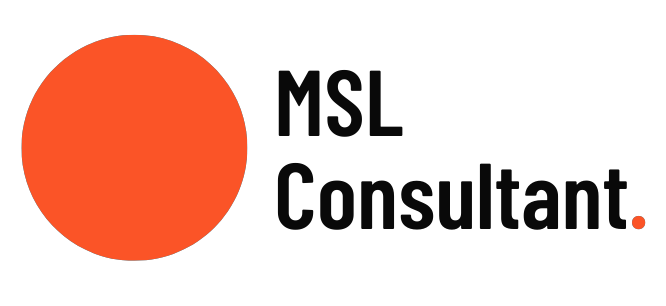MSL Interview – How to deliver a clinical paper presentation
The clinical paper presentation is usually the 2nd round interview for MSL jobs, therefore doing it well is the only thing that stands between you and getting the position – no pressure!
In this article I’m going to share the objective of the clinical paper presentation and a step by step guide on how to prepare and deliver a great presentation.
Objective of the presentation
The clinical paper presentation serves a few different purposes during the MSL interview. The hiring manager is trying to assess three things:
· Your ability to upskill in a new therapeutic area quickly (MSL candidates are usually given 24 – 48 hrs to prepare the presentation)
· Your ability to present clinical data
· Your ability to critically appraise a clinical paper
Step by step guide on presentation development and delivery
You won’t have that long to prepare so remember it is better to present 10 slides clearly and know the content well than to rush through 30 slides and waffle through the content.
Use the format below to prepare your presentation.
Have an upcoming MSL interview? Check out our step by step guides and templates
Slide 1: Title slide
· Title of paper
· Authors – research the 1st and last authors. These are likely to be leaders (international KOLs) in their respective therapeutic areas and it is good to demonstrate you have done your research
· Date of publication – How recent is it? How relevant is it to clinical practice today?
· Journal – What is the impact factor? Is this a respected journal in this therapeutic area?
· Clinical trial study phase – Is it a Phase I or phase IV? What does a phase IV trial mean?
Slide 2: Background
Include information on the drug and disease it treats
Slide 3: Aim of Study
· Study objective
· Hypothesis
· Primary endpoints – are these validated endpoints? Are these measures commonly used in this therapeutic area? For example, in analgesia clinical trials, the SF-36 questionnaire is a validated measure for quality of life
· Secondary endpoints – these are not as important as primary endpoints but still worth providing an overview of what the secondary endpoints measured
Slide 4: Study Design
· How was the study designed?
Slide 5 – 7: Results
· Copy and paste graphs from the paper & discuss the data
Need help presenting clinical data? Book in for an interview coaching session
Slide 8: Discussion
What did the authors conclude from the data?
Slide 9: Conclusion
· What is the main take home message of the study?
· What was the most important result?
· Is further analysis required?
· Were there any safety concerns or serious adverse events recorded in the study?
· Is an additional study required to increase the validity of the results?
Slide 10: Questions
· Include a slide at the end of the presentation calling for questions from the audience
· In the event you are asked a question and you don’t know the answer, don’t try and fluff your way through it. An MSL is a trusted, credible source of information, they don’t make up answers to save face. A simple “great question, I’m happy to do some further research and find an answer for you” will demonstrate you are confident and if this response is used when speaking to a KOL it will create an opportunity to further develop the relationship with the KOL as you have created another reason to speak to them and provide value to them.
There you have it, a step by step guide to quickly and effectively prepare your clinical paper presentation for an MSL interview. Once you have prepared the slides, rehearse your presentation out loud in front of the mirror to ensure you are comfortable with the content. You may get asked questions throughout the presentation, so practice with a friend and ask them to interrupt you during the presentation, so you are calm if this happens in the interview.
For further information on clinical paper presentations, check out our interview resources.
